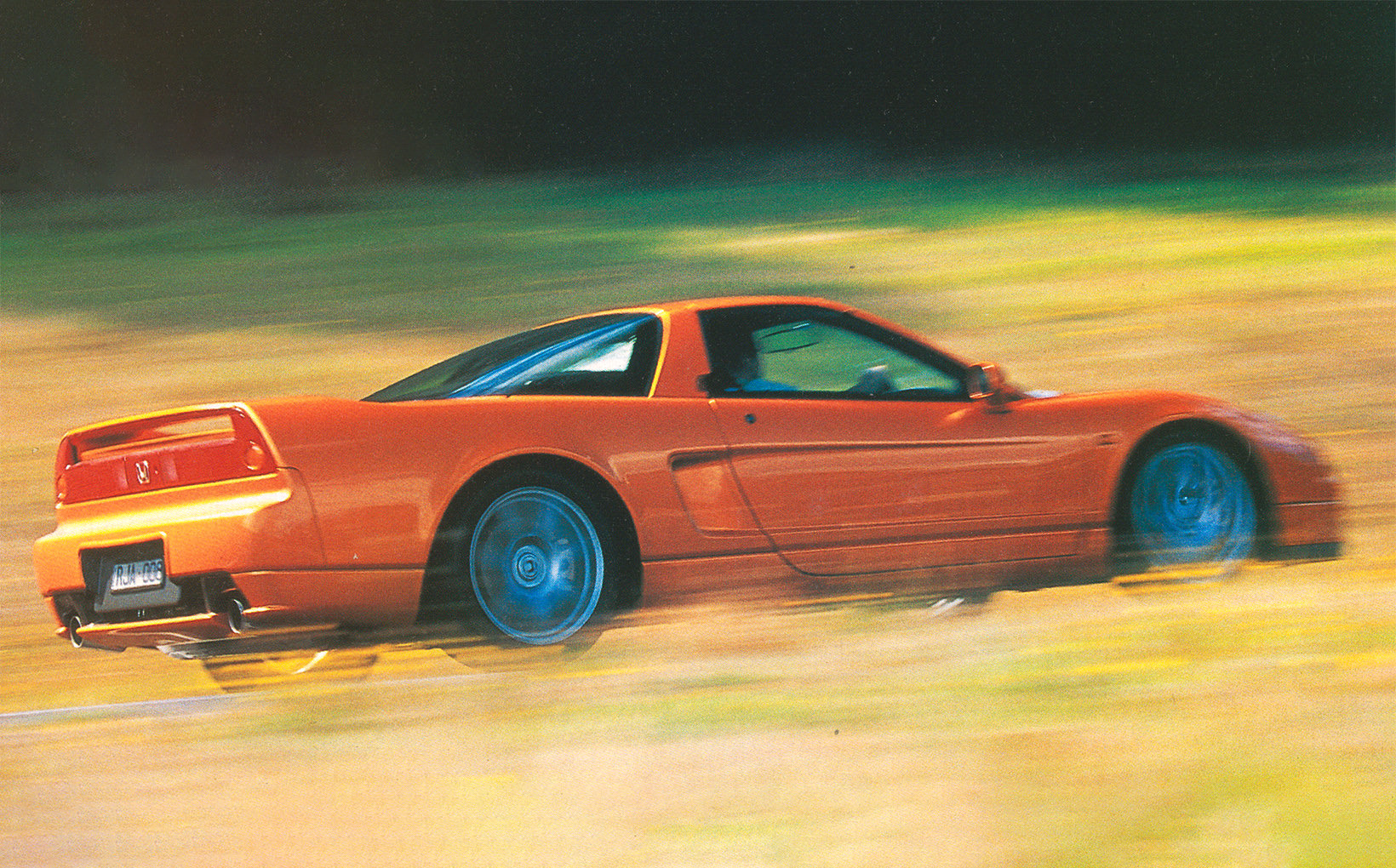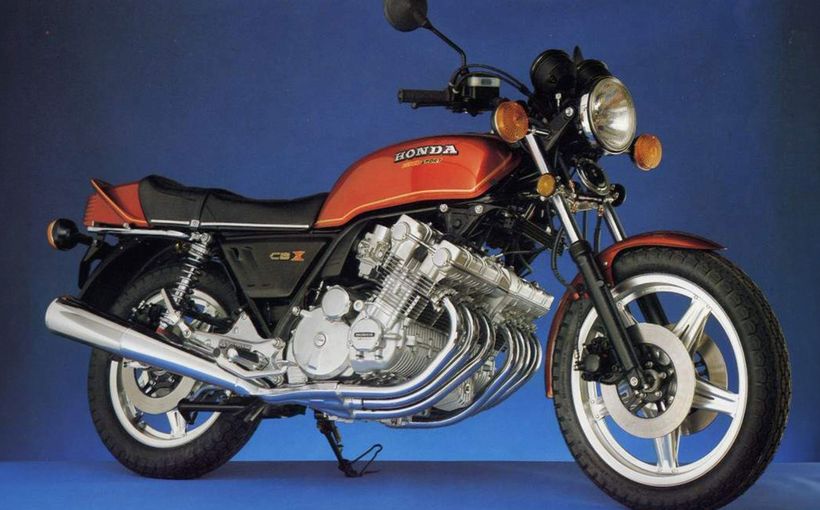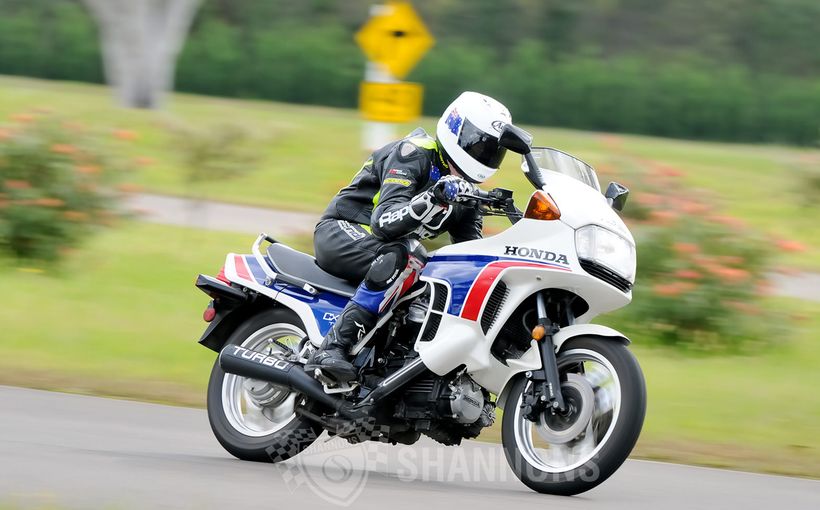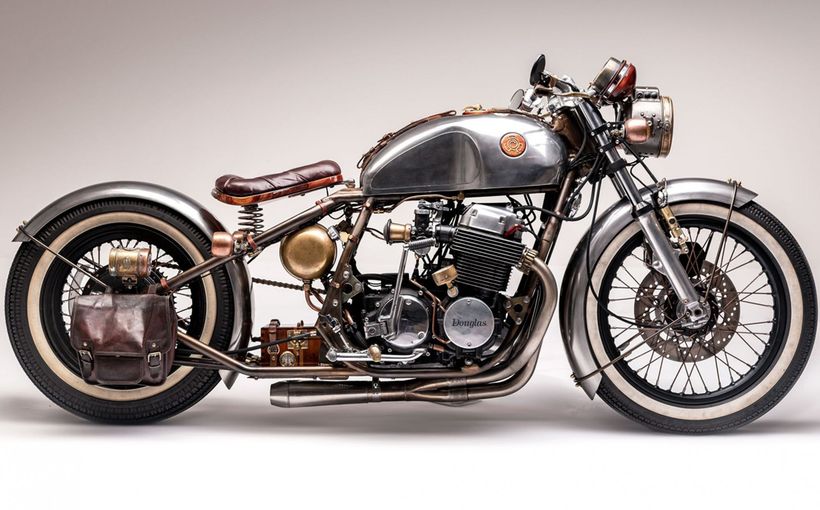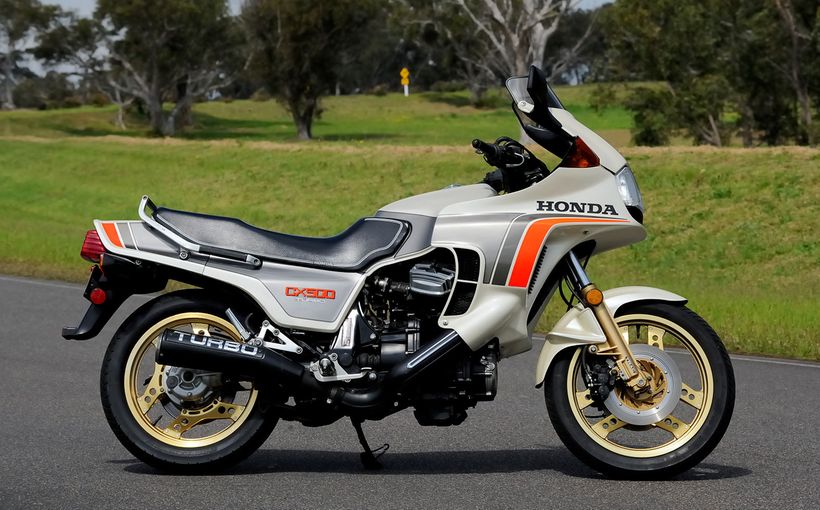
WORDS: EWEN PAGE PHOTOS: CRISTIAN BRUNELLI
AImost crashed the last time I drove one of these things. Car of the Year testing. 1991, at the Driver Education Centre of Australia, Shepparton, Victoria. A younger and slightly more stupid Page is pushing harder and harder on DECAs tricky _couple-of-kays closed-bitumen loop. Feeling like Fangio… until I steam way too hard into an opening right-hander, stay off the gas a little too long, and the blood-red NSX starts to revolve. I grab big chunks of opposite lock, stab the throttle, and pendulum out of the slide. Ugly. One trip into the gum trees averted, something twigs: the meek and mild, mid-engined NSX does have a dark side after all.
Zip forward 11 years and I have to remind myself of that day. The NSX-T (for Targa) is so un-supercar; its easy to forget its intended function. This is a car with a claimed top speed of 280km/h. but which is happy crawling along at less than 1000rpm in sixth gear. Heading west out of Melbourne on the Calder Highway for Castlemaine, the NSX is an impressively relaxed and comfortable highway car.
With the six-speed manual in top slot and cruise control activated at 115km/h, the NSX feels just the way it used to the last time I drove it. Feels just like a homely Honda sedan, in other words.
This is only the third iteration of the NSX, a human-like evolution considering the car was launched in Japan in 1990. After all those shoddily-built Ferraris, Lamborghinis, and Aston Martins, the NSX was a revelation back then. The doors shut properly. The panel gaps were consistent, the paint flawless and the interior didn't creak or peel.

Honda had created a top-shelf sports car that even bottom-rung drivers could enjoy. The clutch was light and precise, as was the gearbox. Vision, parking. warranty, and price: the NSX killed everything else of similar performance for the mundane, but important, aspects of car ownership. It was the first car to have its intake and exhaust notes tuned in an acoustic lab. It brought consumerism to the supercar league, because it forced Ferrari to care about quality and usability. And along with Nissan's Pulsar, it was our 1991 Car of the Year. This was a very significant ear.
And that's about where the story ends. Japan got a few spin-off models, but in Australia the NSX has become almost invisible, cobwebbed through lack of attention. You don't see many on the street, and when you do it isn't an event on the scale of a passing Ferrari. Honda went to sleep, but has awoken for the first time since 1997 to apply some new spin on the same recipe.
Calling it a new model is putting it a little too strongly. More like a light rearrangement of the features list. Like, different colours for the instruments and door trims, new 17in alloys, restyled taillight housing, and a restyled front bumper. The interior's an improvement, but it's still too Honda-basic for a car the other side of $250,000. The indicators, cruise, light and wiper controls on the column are ug-lee, and smell of Civic. The radio unit looks downmarket. But worse, the hard-hugging driver's seat power-adjusts for travel and backrest incline only. The steering wheel telescopes but won't tilt (like the $2000), and the seat is set too high. I'm a shade under six foot - a real man's knees would be touching the underside of the steering wheel rim, while his head would be wedged into the Targa roof. So you sit on this car, rather than in it.


Those bubble-eyes look like an unfortunate afterthought, and the chintzy gold paint on the callipers reeks of nit-boy aftermarket. The NSXs body has aged gracefully enough, but its jewellery - like the full-width rear tail-light/reflector - is very 80s. It's an old car, developed for another decade and a different environment.
Best way to describe the driving experience is to use just one word: efficient. Although it now comes with a six-speed manual and an extra 200cc for 3.2 litres. '02 NSX gives off exactly the same vibes as the '90 original. Everything has been maximised to the nearest micron. The engineers are happy, but in the process of getting the theory just right, they bled the car of personality. It was that way 13 years ago, and it still is.
The 206kW V6 behind your shoulders is brilliantly smooth and astonishingly flexible, but its too linear, too refined to be exciting. Mash the throttle in first and you'll marvel as the tacho needle swings right without bringing a discernable increase in vibration and harshness. But power and torque delivery are so scamless so perfect, that it doesn't feel like the car is accelerating really hard at all. It is, of course, because the engineers made sure it would. It just doesn't feel like a bunch of humans developed this car, more that their computer programs got the final say.
It's deceptively quick, best above 4000rpm and when running right to the 8000rpm redline. The gearbox is the NSX's second-best feature: one snick and you're into second; two and you're into third ... and so on, all the way to sixth. The synchros are strong and fast; shift gears slick-quick ... feel the NSX squat with full-throttle upchanges.

Heel-and-toe downshifts are a snack because the brake and throttle pedal heights are matched nicely: A short, sharp blip of the throttle, and the lever snicks home nicely. Charging into tight corners, you can drop from sixth to second with a wide-open brap on the throttle, and gentle casing of the scarlever across the gate. The brakes are powerful and reasonably precise for feel, and the ABS threshold is quite high.
You'd expect a car like the NSX to maintain very high comer speeds, and it does. The chunks Dunlop SP Sport 8070s get a hold of tarmac like Anna-Nicole Smith clutching a wealthy old bloke's account PIN number. This is a gentle understeerer, whether you're turning in or hard on the gas coming out of a corner. The traction control is unobtrusive, even on roads with occasional damp patches. And with it switched off. The NSX doesn't become a wicked oversteerer because those broad rear tres are hard to overpower.

It's a balanced and secure handler, but it's very clinical in its actions. The steering is a bit heavy at speed and inaccurate around the centre. The car bump-steers a little, and wants to find its own way once you've turned in. You have to stay on your game to ensure the NSX turns on the line you've set.
I'm sure this ear would generate impressive g- force numbers on a skidpan, but on real roads it's a bit dull and leaden in the way it goes about its business. It doesn't have the electric-alertness of a 911, or the flowing grace of an M3. Its steering simply lacks the kind of precision you need to make those tiny, but crucial, adjustments at high speed.
Slicing out a section of the roof doesn't help. Despite re-tuning of the suspension - the front springs are stiffer and the rear stabiliser bar fatter - the NSX skitters over short undulations, and isn't so comfortable on road surfaces where the dampers have to move quickly over short distances. The steering wheel shakes in your hands at these times, and although it's not bad for torsional rigidity, it's no Boxster. Surprisingly gentle on the freeway, grade-A highway, and around town, the NSX ain't so flash on backroads,

Honda's hero car is still hugely impressive for its build quality - the beautiful simplicity of the roof's removal and storage in a compartment above the engine, and the way it doesn't squeak or rattle is a testament to that. But the NSX is s a product of the '80s, a museum piece from a different century. Today, it's important more for the positive changes it forced on the supercar formula than as a car itself.
HONDA NSX
www.honda.com.au
2002 price $256,500
body steel, 2 doors, 2 seats
drivetrain mid-engine (east-west rear-wheel drive
engine 3.2-litre, V6, doh, 24v
power 206kW/7300rpm
torque 298Nm/5300rpm
transmission 6-speed manual
size 1/w/h 4430/1810/1175mm
wheelbase 2530mm
weight 1435kg

Protect your Classic. Call Shannons Insurance on 13 46 46 to get a quote today.

